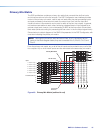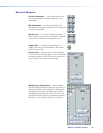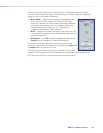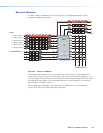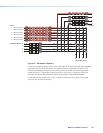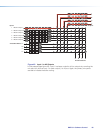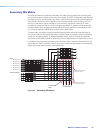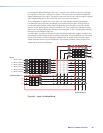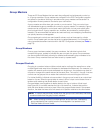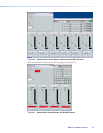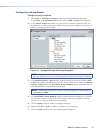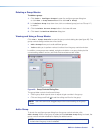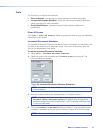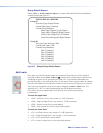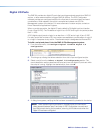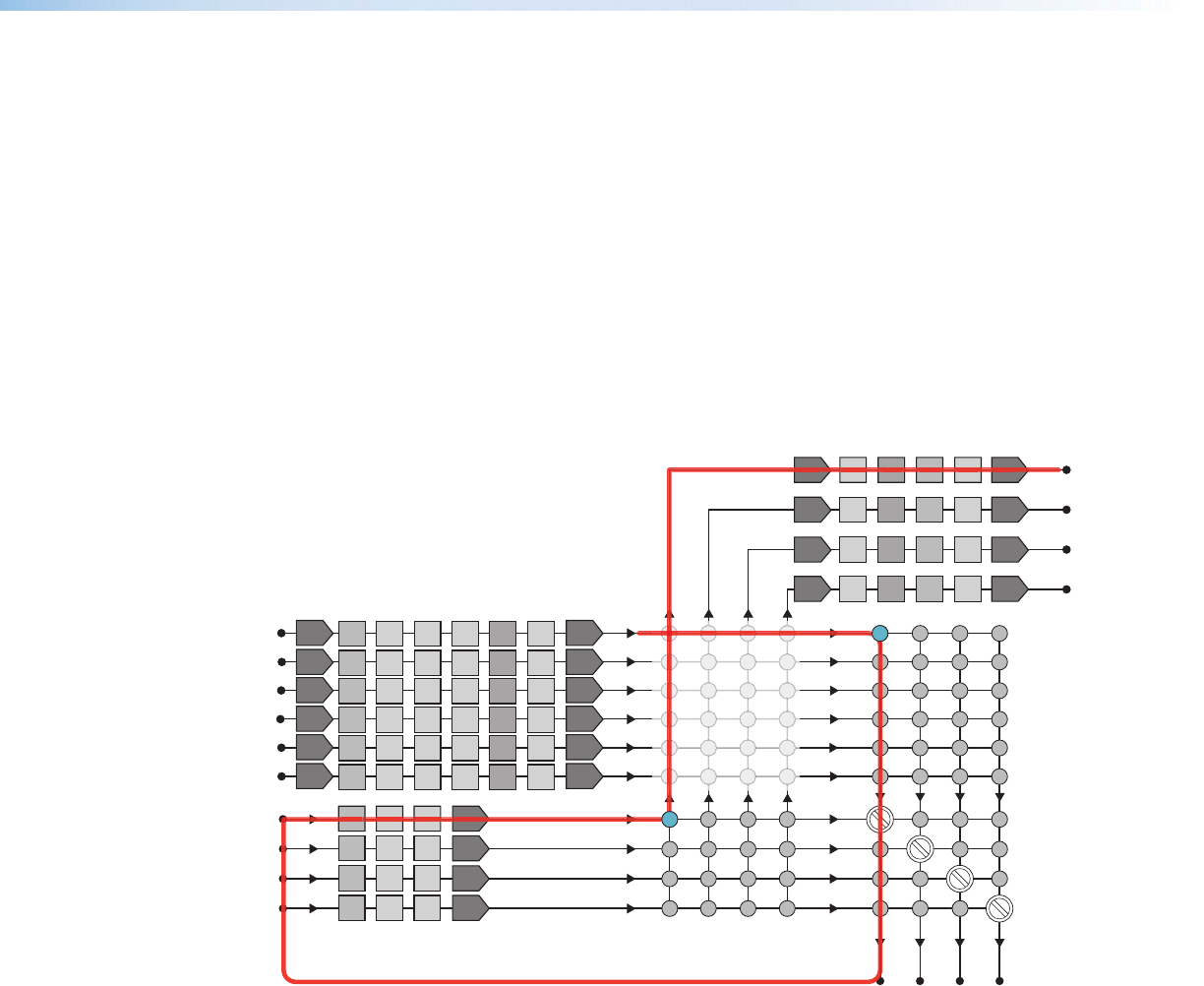
In the example below (see figure 45), input 1 is sent to the virtual bus send by muting all
four signals on the input1 primary mix-points. The virtual bus now serves as additional
signal processing for the input. The signal routes over virtual bus A and through the signal
chain before being sent to the virtual bus return mix-point and output 1.
This configuration is useful when more than one input requires identical processing.
For example if all inputs were normalized but required a uniform gain to bring them up
to adequate output levels, rather than changing each pre-mix gain control by a similar
amount, all six inputs can be routed to virtual bus A. Then, using the virtual bus A return
gain control, a single adjustment can apply the same gain to all six inputs before sending
the signal to the desired output line.
In other cases, if multiple microphone inputs are being mixed with program material, only
the program material might require loudness contouring. The microphones can be routed
directly to the output while the program material input is routed to the virtual bus return
where loudness contouring can be applied. The program material is then routed to the
same output as the microphones.
Mic/Line Input 1
Mic/Line Input 2
Mic/Line Input 3
Mic/Line Input 4
Mic/Line Input 5
Mic/Line Input 6
A
B
C
D
1
2
3
4
5
6
ABCD
1
2
3
4
Outputs
Virtual Bus Send
Virtual Bus Return
FILTDLY
LOUD
DYN
VOLTRIM
FILTDLY
LOUD
DYN
VOLTRIM
FILTDLY
LOUD
DYN
VOLTRIM
FILTDLY
LOUD
DYN
VOLTRIM
GAIN
GAIN
FILT FBS DYN
DYN
DLY
DUCK
GAIN
GAIN
FILT FBS DYN
DYN
DLY
DUCK
GAIN
GAIN
FILT FBS DYN
DYN
DLY
DUCK
GAIN
GAIN
FILT FBS DYN
DYN
DLY
DUCK
GAIN GAIN
FILT FBS DYN
DYN
DLY
DUCK
GAIN
GAIN
FILT FBS DYN
DYN
DLY
DUCK
Inputs
FILT DYN
GAIN
LOUD
FILT DYN
GAIN
LOUD
FILT DYN
GAIN
LOUD
FILT DYN
GAIN
LOUD
GAIN
FILT
DYN
LOUD
FILT
DLY
LOUD
DYN
VOL
TRIM
Figure 45. Input 1 to Virtual Bus A
DMP64 • Software Control 68




